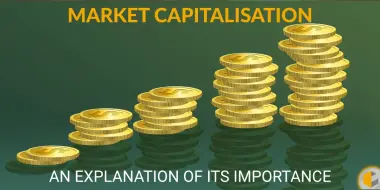Blockchain is far more than cryptocurrency. It is the technology underlying most of the cryptocurrencies like Bitcoin, and it’s now being applied in a range of business applications. This article gives you a brief and easy-to-understand overview of how the blockchain works.
What is Blockchain?
Blockchain is a decentralised ledger, or in simple words, a public network that lets individuals and businesses securely save and transfer information and currency instantly. The term implies how the data is saved” blocks” of information, linked across a permanent “chain.” When a new block is added to this chain, it makes the preceding blocks even more difficult to change, which makes each block safer with time. Each block has a timestamp and is protected. The whole record is available to anyone present in the decentralised system.
Blockchain, being decentralised in nature, is not stored on a single computer or controlled/supervised by one company, organisation, or bank. Instead, it is distributed over a chain of computers connected to the network. Take it as a Google Docs and the way it can share your single document and associated real-time changes with multiple users. This is similar to how the blockchain works.
The Blockchain’s Basic Elements
In light of the above, the basic elements that make the blockchain include:
- The record: This can be any kind of information.
- The block: A pack of different records.
- The chain: This entails all the blocks connected.
The Blockchain Transactions – Step by Step
All blockchain transactions, irrespective of the industry they are being generated for, go through the following steps:
- The transaction is recorded in a record, listing digital signatures from all parties involved along with relevant details.
- The transaction is examined to ensure it’s valid. The connected computers in the network examine the transactions to check if it is a real transaction. This is a decentralised process taking place among different nodes of the network.
- As the transaction is verified and validated as being real, it’s added to a block. Every block has a code; a hash that is unique to that specific block. It means each block has its hash and the hash of the block before it so that the users always know where to locate the block in the chain.
- The hash carried by the block ensures that it is in the correct chronological order.
The Idea of Smart Contracts & Data Compliance
Many small and large-scale businesses have started using blockchain to strengthen their operations and expand themselves. For instance, Stripe created easier access to credit card processing for small businesses through their blockchain app. Blockchain technology bears the potential to streamline business processes by making their operations easier and smoother. Two of the ways this may happen include:
Smart contracts:
Blockchain technology can be used to generate, verify, and apply contracts between users. It can be used to pay utility bills and compensate employees, invoice customers, create insurance plans and policies, handle inventory, or any other kind of transactional activity. Many businesses have already developed the infrastructure to develop smart contracts that can be used in their operations.
Data compliance:
With new regulations and standards imposed for data compliance and breaches, blockchain carries an ability to authenticate transactions without having to know the user’s identity. This leads to a unique user experience that is far more secure and least vulnerable to hacking.
It is said that blockchain technology is still in its early stage of implementation across businesses and everyday applications. In the future. We expect an increasing number of blockchain-based services to be offered to individuals, businesses, and industries as alternatives to existing record-keeping and transaction processes.
Conclusion
Blockchain is decentralized and immutable technology, possesses an impressive ability to drive innovation for the novel ways of doing business, and can prove to be especially useful for businesses and industries where security, transparency, and cost-saving are the most important concerns.
If you are considering purchasing cryptocoin, please see our How to buy Cryptocoins guide for Australians.
Related Posts






Subscribe to our newsletter!
Information





